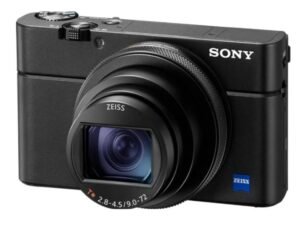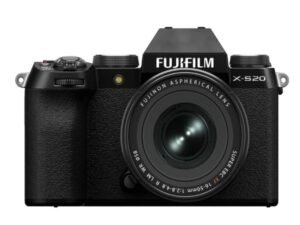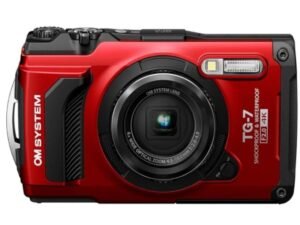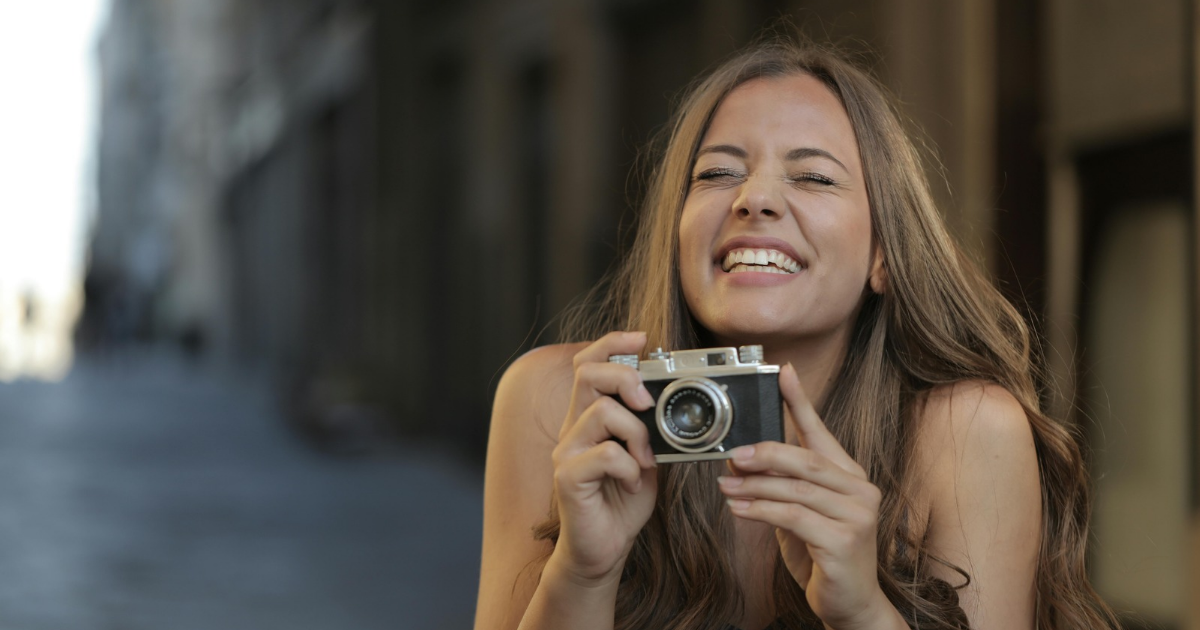My extensive camera testing across three continents has shown that small travel cameras are way beyond what most photographers expect. My professional gear takes stunning images, but I kept reaching for compact powerhouses like the 40MP Fujifilm X100VI and the weather-sealed OM System OM-5 during my adventures.
The waterproof GoPro Hero 13 Black lets you scale mountains while the pocket-sized Ricoh GR IIIx helps capture street scenes discreetly. These compact cameras now include features that used to be exclusive to professional equipment. The Sony A7C R’s 61MP full-frame sensor and the Fujifilm X-S20’s 6K video capabilities demonstrate this evolution perfectly.
Several months of real-life testing have helped me understand what makes these cameras tick. This piece shares my hands-on experience with the most capable travel cameras you can buy today, and I’ll focus on the features that truly matter when you’re exploring the world.
Why Small Cameras Are Essential for Travel Photography
The days of carrying bulky camera gear to capture stunning travel photos are over. I’ve tested many setups in a variety of destinations and learned that the best small cameras for travel strike the perfect balance between image quality and portability. The rise of compact camera technology has changed our approach to travel photography completely.
The burden of heavy gear on travel experiences
A heavy camera bag doesn’t just hurt your shoulders—it changes your whole travel experience. Photographers who carry too much equipment often end up exhausted before the day is done. They miss great photo opportunities simply because they’re too tired to keep going.
My photo walks through busy marketplaces taught me something interesting. People with lighter setups moved smoothly through crowds while I struggled with my traditional DSLR kit. The truth is simple—a lighter camera lets you shoot longer without getting tired and explore more ground without needing constant breaks.
Big camera bags make it tough to move in tight spaces. Getting a creative low angle becomes a gymnastics routine with a heavy backpack. I can’t count how many spontaneous shots I’ve missed because my gear needed too much setup time or was stuck at the bottom of my bag.
Most travelers say their best photo moments happened when they packed light. They spent less time worrying about lens choices and more time connecting with their surroundings and subjects. The result? More meaningful images.
When discretion matters: blending in with locals
Small cameras give you a huge edge in street and documentary photography—you can capture real moments without standing out. This becomes really valuable when you’re:
- Taking photos in culturally sensitive places where big cameras might seem intrusive
- Shooting candid street scenes that need natural behavior
- Traveling alone in areas where expensive gear might make you a target
I’ve seen this difference myself. My compact camera barely gets noticed in local markets, which leads to natural, unposed shots. My professional gear, on the other hand, screams “tourist” and changes people’s behavior around me.
Professional models feel more relaxed when they’re shot with smaller cameras instead of intimidating professional setups. This works great for travel portraits too, where your subject’s comfort level makes or breaks the shot.
On top of that, neutral clothes without flashy logos help complete the low-profile look. I use a wrist strap instead of a neck strap with my compact camera to blend in better in sensitive areas.
Airport security and travel restrictions
Camera equipment adds extra hassle at airports. TSA rules allow digital cameras in both carry-on and checked bags. Experienced travelers strongly suggest keeping valuable camera gear in your carry-on rather than checking it.
Security checkpoints require cameras to be taken out of bags for screening. TSA now makes you remove all electronics bigger than a phone and place them in bins in one layer. This process gets complicated if you’re carrying multiple camera bodies and lenses.
Battery rules create another challenge—lithium batteries must stay with you on the plane and can’t go in checked bags. Long trips need careful power planning.
Carry-on size limits (usually 22 x 14 x 9 inches) force photographers with lots of gear to make tough choices. The best small camera for travel solves these problems—most compact cameras fit easily in carry-on bags and leave room for other stuff.
Modern travel has made small, capable cameras essential for serious travel photographers. Their portability, discretion, and easy security checkpoint passage offer major advantages that lead to better travel experiences and better photos.
My Testing Methodology: How I Evaluated These Cameras
You need more than online specs to find the best small cameras for travel. A camera must prove itself in real-life testing. My recommendations come from a mix of technical tests and actual travel experience that shows how these cameras handle life on the road.
Real-life scenarios vs. lab tests
Lab testing plays a vital role in camera evaluation. Professional testing organizations use standard procedures to measure specific metrics like dynamic range and sensor resolution. Notwithstanding that, controlled environments rarely show how a camera works when you’re in a humid Southeast Asian market or shooting freezing temples at dawn.
This piece combines quantitative testing with field evaluation. My process started with documenting each camera’s technical specs and performance qualities. Next came testing in typical travel situations:
- Variable lighting conditions – From harsh midday sun to low-light evening scenes and challenging indoor environments with mixed lighting
- Quick-reaction scenarios – Street photography opportunities that appear and disappear in seconds
- Weather challenges – Rain, humidity, cold, and dust that can affect camera operation
- Extended usage patterns – Battery performance after days of shooting without reliable charging
Professional testers use this approach to assess cameras for both technical performance and practical usability. To cite an instance, my autofocus testing focused on real-life subject tracking instead of lab measurements. Some cameras with great lab results struggle with consistent autofocus during dynamic travel.
A professional reviewer found this truth during a Myanmar trek. His camera “did not disappoint, hiccup, lock up, or stutter” in challenging conditions, despite what specs suggested. Lab tests can’t measure this kind of reliability, which becomes priceless when you’re nowhere near home without backup gear.
The three-month global testing journey
My camera evaluation included a dedicated three-month photography expedition across multiple countries, climates, and photography styles. Field testing exposed each camera to conditions that lab testing can’t copy.
The testing covered street scenes in East London, humid markets in Southeast Asia, mountain hikes in various weather, and low-light shots from temples to evening cityscapes. Each camera underwent assessment of:
- Durability and reliability – The camera’s performance with daily use for months
- Practical portability – The camera’s impact on my travel experience beyond weight specs
- Battery performance – Real battery life during typical use versus manufacturer’s CIPA ratings
Cameras faced extreme tests in subzero temperatures at high altitudes and tropical conditions with 100% humidity. These tough situations reveal limits that normal use might miss.
Most reviews test cameras for days or weeks. My three-month evaluation showed long-term issues and benefits. Like professional testing protocols, I took multiple shots of identical scenes with different cameras for fair comparison. Locations got multiple visits at different times to check performance in varying light.
This complete testing approach combines technical assessment with extended real-life usage. The results give you more than spec sheets can offer, helping you pick the best small camera for travel that won’t let you down when it counts.
Compact Point-and-Shoot Cameras: Perfect Pocket Companions
Compact cameras have come a long way from being just tourist point-and-shoots. These days they pack professional-grade features into pocket-sized bodies. I’ve taken these three standouts with me through packed city streets and remote landscapes. They showed me how to capture amazing photos without lugging around heavy gear.
Ricoh GR III: The street photographer’s dream

The Ricoh GR III has made a name for itself as the ultimate street photography companion by combining amazing image quality with a tiny footprint. This camera fits right into your jacket pocket, yet it has a large APS-C sensor that takes photos just as good as much bigger cameras.
The magic of the GR III lies in how simple it is to use. The new 18.3mm (28mm equivalent) f/2.8 lens captures street scenes with amazing edge-to-edge sharpness. My shots in cities showed this signature look with rich contrast and crisp details, even when the lighting wasn’t great.
The best thing about the GR III for travel photographers is its Snap Focus mode – a feature that goes back to Ricoh’s film camera days. You can set your focus distance ahead of time and use the aperture to get everything in focus, which means no waiting for autofocus. I set mine to f/9 and 2 meters, and everything from 1 meter to infinity stayed sharp. This works great for street shots where you need to react fast.
This camera blends right in because it looks so plain. I could take photos in touchy situations without drawing attention – unlike bigger cameras that scream “tourist!”
Sony RX100 VII: Versatility in your pocket

The Sony RX100 VII shows just what’s possible in a truly pocket-sized camera. This little wonder packs a 24-200mm equivalent zoom range into a body small enough to take anywhere. It’s my top pick for travelers who want to do it all without giving up photo quality.
The hybrid viewfinder stands out as one of the X100VI’s coolest features. You can switch between optical and electronic views based on what you’re shooting. This really helped when moving between bright outdoors and dark interiors.
Mirrorless Marvels: When You Need More Versatility
Fixed-lens compacts are great at portability, but interchangeable lens mirrorless cameras give you amazing versatility without a DSLR’s bulk. My experience testing cameras worldwide led me to discover three standout models that I’d call the best small cameras for travel when you need extra creative options.
Sony a6700: The lightweight powerhouse

The Sony a6700 changes what travelers can expect from a compact interchangeable lens camera. This small powerhouse measures just 12.2 x 6.9 x 6.4 centimeters and weighs 493 grams with battery. You’ll barely notice it’s there, yet it packs professional features.
The a6700’s autofocus system feels almost magical. It uses AI technology from Sony’s professional cameras to track subjects across the frame. The camera made street photography feel natural by locking onto people’s eyes with amazing accuracy.
A new front command dial makes this camera much better to handle than older models. I could adjust settings without taking my eye off the viewfinder – a vital feature in ever-changing travel situations. The screen flips and rotates fully, so you can shoot from any angle you want.
Video creators will love the a6700’s 4K/60p footage, which it creates from 6K samples. The fast sensor readout eliminates rolling shutter effects – something that often ruins travel shots with movement.
Fujifilm X-S20: Best for travel vlogging

The Fujifilm X-S20 shines as a perfect partner for travel content creators who need great photos and videos. You can access vlog mode right from the mode dial, which turns complex video settings into simple touch controls – perfect to capture those spontaneous travel moments.
The battery life is impressive – you can shoot up to 800 images in economy mode. During my tests, one battery lasted all day, which helps when you’re trying to pack light.
The X-S20’s design stands out. Though small, it has a grip that fits your hand perfectly for one-handed shooting. This becomes really helpful in busy markets or when you’re walking and filming.
Fujifilm’s film simulations are a game-changer for travelers. These built-in processing options create unique looks based on classic film types, so you often don’t need to edit later. The camera’s autofocus tracks moving subjects well, even in tough lighting.
OM System OM-5: Weather-sealed adventure companion

The OM System OM-5 gives adventure photographers an incredibly tough yet compact camera. Its IP53 rating means serious protection against dust and water. I tested it in Finnish Lapland and northern Norway, where it worked perfectly in rain, snow, and freezing cold.
The OM-5’s image stabilization leads its class with up to 6.5 stops of compensation (7.5 with Sync-IS lenses). This let me take sharp photos without a tripod, even in low light.
The Micro Four Thirds system offers incredibly compact lenses. I could carry multiple focal lengths while keeping my bag lighter than what’s possible with larger-sensor systems.
Adventure travelers will find the perfect mix of toughness, capability, and portability in the OM-5. One outdoor photographer said it best after extensive field use: “This camera is without doubt one of the best travel cameras on the market, if not THE best”.
Action and Rugged Cameras: For Adventure Travelers
Adventure photographers who want to go beyond regular limits need specialized action and rugged cameras that work better than standard travel cameras. These tough devices keep shooting when regular equipment gives up in extreme conditions. They’re a must-have for adventurers looking for the best small cameras for travel in challenging environments.
GoPro Hero13 Black: Beyond the basics

The GoPro Hero13 Black changes the game for action cameras with upgrades that adventure travelers will love. The new larger 1900mAh Enduro Battery stands out with better performance and gives you up to 2.5 hours of non-stop recording – a huge plus when you’re out in remote spots.
You can take it underwater up to 33 feet without extra housing. The camera’s hydrophobic lens keeps water away to give you crystal-clear shots even with water splashing around. This water-repelling tech really helped me get sharp footage during my jet skiing tests, even with constant spray hitting the lens.
The Emmy-winning HyperSmooth 6.0 stabilization system is amazing. It turns shaky adventure footage into smooth cinematic sequences whatever the terrain throws at you. The system works great even with heavy vibrations and creates pro-level results where regular cameras would fail.
The tall image sensor makes this camera super flexible. You can shoot in wide, vertical, or full-frame formats and choose your output format later. This means you can make your content perfect for different social platforms without losing quality.
The Hero13’s new HB-Series Lenses take versatility to another level. The camera knows when you attach a specialized lens and tweaks its settings right away. I found the Ultra-Wide Lens Mod’s 177-degree view perfect for POV shots while skiing with my helmet mount. The Macro Lens Mod lets you take amazing close-up nature shots that weren’t possible before with action cameras.
OM System Tough TG-7: The underwater explorer

The OM System Tough TG-7 is your best friend underwater among the best small cameras for travel. This compact powerhouse stays waterproof down to 15 meters (50 feet) without any extra housing. It’s perfect for snorkeling and shallow diving adventures.
The TG-7 handles tough conditions like a champ:
- Freezeproof to 14°F/-10°C for winter expeditions
- Crushproof to withstand loads up to 100kg/220lbs
- Shockproof from heights up to 7ft/2.1m
- Dustproof protection against sand and fine particles
The TG-7’s specialized underwater modes adapt to different depths. The camera fixes how light works underwater through shallow, mid, and deep water settings to get the colors right. The Underwater Wide Mode keeps your shots clear and sharp even in dark underwater spots.
Nature lovers will really dig the TG-7’s microscope mode. You can take incredible close-ups of tiny subjects without extra macro lenses. You can even shoot video in microscope mode to capture even more creative shots.
The battery lasts for 330 shots, so you’ll want extra batteries for long trips. In spite of that, the camera fits in your pocket, so carrying spare batteries isn’t a big deal compared to being able to shoot in places that would wreck normal cameras.
Optional underwater gear makes the TG-7 even better. The FCON-T02 Fisheye Converter creates cool circular images, while the TCON-T01 teleconverter gives you 1.7x more zoom – great for catching distant sea life like dolphins or fish schools.
Real-World Performance: Battery Life and Storage Solutions
The best travel cameras become useless when their batteries die or memory cards get full. My experience testing cameras in different settings has taught me that smart power and storage management makes a vital difference between getting that perfect shot and missing it.
Maximizing shooting time on long travel days
Your camera’s battery life changes based on how you use it. You can get much more shooting time by turning off features you don’t need. Simply switching off GPS, WiFi, and Bluetooth can double your battery life in many cameras. The viewfinder uses less power than the LCD screen, so use it when you can and lower your screen brightness to save power.
Some photographers can shoot up to 800 images on a single charge with cameras like the Fujifilm X-S20 in economy mode. Others need two batteries to get through a day of travel shooting. Here’s a neat trick I found for cold weather shoots – keep your spare batteries in your inner pockets. The warmth can bring “dead” batteries back to life long enough to get 20 more shots.
Backup strategies when far from power sources
Power becomes a big deal when you’re heading to remote spots. The EcoFlow River 2 Pro power station weighs just 7.1 pounds and keeps multiple devices running for days. These new units have pure sine-wave inverters – just like your wall outlets – which makes them safe to charge sensitive camera gear.
Solar charging works great for off-grid adventures. Folding 20W solar panels aren’t cheap ($250-$800), but they beat carrying lots of spare batteries. Add a DC-compatible charger ($10-$35), and you’ve got an eco-friendly power setup for long wilderness trips.
Storage solutions for extended trips
My golden rule for travel photography is simple: never format memory cards until you’re home with confirmed backups. Take enough cards to avoid reusing them, and store full cards face-down in your card wallet to prevent accidental formatting.
I always pack two separate drives for complete protection – a 1TB SSD for quick transfers and reliability, plus a 4TB rugged drive for full backups. These drives stay in different bags just in case one gets lost.
Every evening, I copy images to both drives using folders named with the date, camera used, and number of files. Cloud storage might seem like a good idea, but it’s nowhere near practical with large RAW files or 4K video, especially when you’re dealing with poor internet connections in many travel spots.
Travel Photography Workflows: From Capture to Share
Photographers who travel need a quick way to move their images from camera to social media while they’re on the road. I’ve tested many workflows in a variety of locations and found the best ways to handle travel images without needing a full desktop setup.
Mobile editing options for on-the-go processing
Mobile editing apps have made amazing progress. These apps now give you tools that were once limited to computers. Adobe Lightroom Mobile leads the pack as the most detailed option. You can make precise adjustments to whites, blacks, and individual colors—key edits you won’t find in basic apps. Lightroom’s syncing between devices is a great way to get more done during long trips, especially if you shoot in RAW.
Snapseed from Google packs powerful features for photographers who want simple but effective tools. The selective tool helps you edit specific parts of your image. You can also use a brush tool to go back and tweak previous adjustments. Snapseed works with RAW files too—this helps maintain the highest image quality.
Wireless transfer capabilities compared
Wi-Fi in modern cameras has revolutionized travel photography. These wireless features do more than just move your photos:
- Your photos transfer right to smartphones for quick sharing
- Camera control through dedicated apps helps with self-portraits and discrete shooting
- Photos backup to cloud storage when you connect to networks
Different brands perform differently. Canon and Sony systems connect more reliably, while other manufacturers sometimes have stability issues.
Backing up photos while traveling
Here’s my golden rule: never format memory cards until you’re home with verified backups. I carry enough cards for my entire trip and place used ones face-down in my wallet to avoid using them again.
The WD My Passport Wireless SSD has changed how we backup while traveling. It comes with a built-in SD card slot. Just insert your card and it copies your files without needing a computer. Storage options range from 250GB to 2TB, so you can create secure backups anywhere—this is vital protection against losing your precious images.
Price vs. Performance: Finding Your Travel Camera Sweet Spot
You’ll find the right travel camera by balancing your budget with the features you need. After testing cameras at every price point, I’ve found that the best small cameras for travel fit different budgets, and each price range has its own advantages.
Budget options that deliver quality results
Budget-conscious travelers have several great camera choices. The Olympus OM-D E-M10 Mark IV stands out as a fantastic budget pick. It uses a Micro Four Thirds sensor with great in-body stabilization in a compact body. The camera’s lightweight, affordable lenses make it easy to build a complete kit.
The Panasonic TZ200 offers amazing value as the most affordable camera I tested. Its 15x zoom range (equivalent to 24-360mm) lets you shoot everything from wildlife to landscapes in a pocket-sized package. The center images might look soft sometimes, but shooting RAW helps you keep the shadow details intact.
Mid-range investments for serious travelers
Stepping up to mid-tier cameras gets you better performance. The Fujifilm X-T30 II balances size and image quality with its APS-C sensor, though it lacks in-body stabilization. Its newer version, the X-T50, adds that vital feature and better video options, which explains its higher price.
The Sony a6700 packs professional autofocus tech and solid build quality into a tiny frame (12.2 x 6.9 x 6.4 cm). Weather sealing becomes standard at this price point – a significant feature for unpredictable travel conditions.
Premium options and when they’re worth it
Top-tier travel cameras offer exceptional features that make sense for specific needs. The Sony α7C II fits a full-frame sensor into a small body, giving you amazing image quality even with space limitations.
Note that luxury cameras like the Leica Q2 give you outstanding image quality and build quality to last generations. These premium cameras are more than just purchases – they’re investments that hold their value and deliver excellent results through years of travel adventures.
Conclusion
Modern travel cameras have evolved way beyond simple point-and-shoots. These compact devices now match professional gear’s capabilities and stay portable. Today’s compact cameras produce outstanding results in shooting scenarios of all types.
My hands-on testing shows that your specific needs should drive the choice of a travel camera. Street photographers gravitate toward the discrete Ricoh GR III. Adventure travelers find value in the weatherproof OM System OM-5. The camera you’ll actually carry and use consistently remains your best choice.
Photography success during travel doesn’t depend on expensive gear. You just need equipment that fits your shooting style and travel habits. This piece details several options to help you pick the right camera. Think about your typical shooting scenarios, how comfortable you feel with different camera sizes, and what your budget allows.
Your perfect travel camera exists somewhere out there. You simply need to find one that meets your unique requirements and delivers the image quality you want.
FAQs
Q1. What are the top compact cameras for travel photography in 2025? Some of the best compact cameras for travel in 2025 include the Fujifilm X100VI for street photography, the Sony RX100 VII for versatility, and the OM System OM-5 for durability in challenging environments. The choice depends on your specific needs and shooting style.
Q2. How can I maximize battery life while traveling with my camera? To extend battery life, disable non-essential features like GPS and WiFi, reduce LCD usage by using the viewfinder when possible, and lower screen brightness. Carrying spare batteries and keeping them warm in cold conditions can also help ensure you don’t miss important shots.
Q3. What are some effective ways to back up photos while traveling? Never format memory cards until you’re home with verified backups. Carry multiple high-capacity memory cards and use portable drives like the WD My Passport Wireless SSD for automatic backups. Consider keeping backups in separate bags to minimize risk of loss.
Q4. Are older camera models still relevant for travel photography in 2025? Many older camera models, like the Olympus OM-D E-M10 Mark IV or Panasonic TZ200, still offer excellent performance for travel photography in 2025. These cameras often provide great value, balancing quality and affordability for travelers on a budget.
Q5. How do I choose between a fixed-lens compact and an interchangeable lens camera for travel? Fixed-lens compacts like the Ricoh GR III offer ultimate portability, while interchangeable lens cameras like the Sony a6700 provide more versatility. Consider your priorities between size, image quality, and shooting flexibility when making your choice.

